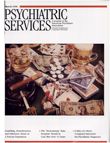Race, quality of care, and antipsychotic prescribing practices in psychiatric emergency services
Abstract
OBJECTIVE: The study examined whether the prescription practices of clinicians in psychiatric emergency services differed for African- American patients. Prescription of antipsychotic medications and its relation to quality of care was a particular focus. METHODS: Data from 442 independently observed evaluations of patients in psychiatric emergency services were examined using multivariate analyses. The observations were made during a five-year period at four urban general hospitals in California. RESULTS: Clinicians in the four emergency services, most of whom were Caucasian, prescribed more psychiatric medications to African Americans than to other patients and devoted significantly less time to their evaluations. African Americans received more oral doses and more injections of antipsychotic medications, and the mean 24-hour dosage of antipsychotics (1,321 milligrams) was significantly higher than for other patients (825 milligrams). The tendency to overmedicate African-American patients was lower when clinicians' efforts to engage the patients in treatment were rated higher. CONCLUSIONS: The results highlight the importance of efforts to engage African Americans in the treatment process and the need for clinical skills and training to help bridge cultural distances.
Access content
To read the fulltext, please use one of the options below to sign in or purchase access.- Personal login
- Institutional Login
- Sign in via OpenAthens
- Register for access
-
Please login/register if you wish to pair your device and check access availability.
Not a subscriber?
PsychiatryOnline subscription options offer access to the DSM-5 library, books, journals, CME, and patient resources. This all-in-one virtual library provides psychiatrists and mental health professionals with key resources for diagnosis, treatment, research, and professional development.
Need more help? PsychiatryOnline Customer Service may be reached by emailing [email protected] or by calling 800-368-5777 (in the U.S.) or 703-907-7322 (outside the U.S.).



